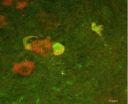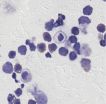(Press-News.org) COLUMBUS, Ohio – Scientists have developed and validated a new method to identify which people are narcissistic: just ask them.
In a series of 11 experiments involving more than 2,200 people of all ages, the researchers found they could reliably identify narcissistic people by asking them this exact question (including the note):
To what extent do you agree with this statement: "I am a narcissist." (Note: The word "narcissist" means egotistical, self-focused, and vain.)
Participants rated themselves on a scale of 1 (not very true of me) to 7 (very true of me).
(How narcissistic are you? Take the test at http://tinyurl.com/ovsf54v.)
Results showed that people's answer to this question lined up very closely with several other validated measures of narcissism, including the widely used Narcissistic Personality Inventory.
The difference is that this new survey – which the researchers call the Single Item Narcissism Scale (SINS) – has one question, while the NPI has 40 questions to answer.
"People who are willing to admit they are more narcissistic than others probably actually are more narcissistic," said Brad Bushman, co-author of the study and a professor of communication and psychology at The Ohio State University.
"People who are narcissists are almost proud of the fact. You can ask them directly because they don't see narcissism as a negative quality – they believe they are superior to other people and are fine with saying that publicly."
Bushman conducted the study with Sara Konrath of the Indiana University Lilly Family School of Philanthropy (formerly of the University of Michigan) and Brian Meier of Gettysburg College. Their results appear in the journal PLOS ONE (study available after embargo at http://tinyurl.com/n3a94k5 ).
Understanding narcissism has many implications for society that extend beyond the impact on the individual narcissist's life, Konrath said.
"For example, narcissistic people have low empathy, and empathy is one key motivator of philanthropic behavior such as donating money or time to organizations."
"Overall, narcissism is problematic for both individuals and society. Those who think they are already great don't try to improve themselves," Bushman said.
"And narcissism is bad for society because people who are only thinking of themselves and their own interests are less helpful to others."
Bushman emphasized that SINS shouldn't be seen a replacement for the longer narcissism questionnaires. The NPI and other instruments can provide more information to researchers, such as which form of narcissism someone has.
"But our single-item scale can be useful for long surveys in which researchers are concerned about people getting fatigued or distracted while answering questions and possibly even dropping out before they are done," Bushman said.
He noted that if it takes a person 20 seconds to answer the single question in the SINS measure, it would take him or her 13.3 minutes to answer the 40-question NPI.
"That is a big difference if you're doing a study in which participants have to complete several different survey instruments and answer a long list of other questions," he said.
The 11 different experiments took a number of different approaches to determine the validity of SINS. Some used undergraduate college students, while others involved online panels of American adults.
One experiment found that SINS was positively related to each of the seven subscales of the NPI which measure various components of narcissism (vanity, exhibitionism, exploitativeness, authority, superiority, self-sufficiency, and entitlement).
Another study found that that participants tended to have similar scores on SINS when tested 11 days apart. One experiment replicated past work that showed people scoring high in narcissism were more likely to engage in risky sexual behaviors and had difficulty maintaining long-term committed romantic relationships.
People who scored higher on narcissism on the SINS had both positive and negative outcomes, Bushman said. They reported more positive feelings, more extraversion, and marginally less depression.
But they also reported less agreeableness, and more anger, shame, guilt, and fear. In addition, people scoring high on SINS showed negative interpersonal outcomes, such as having poor relationships with others and less prosocial behavior when their ego was threatened.
The advantage of SINS compared to other measures, Bushman said, is that it allows researchers to identify narcissists very easily.
"We don't think SINS is a replacement for other narcissism inventories in all situations, but it has a time and place," he said.
INFORMATION:
The research was supported by grants from the John Templeton Foundation.
Contact: Brad Bushman, (614) 292-2055; Bushman.20@osu.edu
Sara Konrath, via Adriene Davis Kalugyer, (317) 278-8972, adrldavi@iupui.edu
Written by Jeff Grabmeier, (614) 292-8457; Grabmeier.1@osu.edu
Just one simple question can identify narcissistic people
Single-item scale can help researchers crunched for time
2014-08-05
ELSE PRESS RELEASES FROM THIS DATE:
Salk scientists uncover new clues to repairing an injured spinal cord
2014-08-05
LA JOLLA—Frogs, dogs, whales, snails can all do it, but humans and primates can't. Regrow nerves after an injury, that is—while many animals have this ability, humans don't. But new research from the Salk Institute suggests that a small molecule may be able to convince damaged nerves to grow and effectively rewire circuits. Such a feat could eventually lead to therapies for the thousands of Americans with severe spinal cord injuries and paralysis.
"This research implies that we might be able to mimic neuronal repair processes that occur naturally in lower animals, which ...
Year-round preventive treatment reduces malaria risk in young children
2014-08-05
A year-round preventive drug treatment substantially reduces young children's risk of contracting malaria and poses no serious risk of adverse events, according to a study by researchers funded by the National Institutes of Health.
The findings demonstrate that prolonged treatment given from 6 to 24 months of age is safe and effective for young children, according to the study authors. Year-round preventive measures are badly needed in locations like Uganda, where the study took place, and where malaria rates remain high throughout the year.
Most previous studies using ...
How spiders spin silk
2014-08-05
Spider silk is an impressive material; lightweight and stretchy yet stronger than steel. But the challenge that spiders face to produce this substance is even more formidable. Silk proteins, called spidroins, must convert from a soluble form to solid fibers at ambient temperatures, with water as a solvent, and at high speed. How do spiders achieve this astounding feat? In new research publishing in the open access journal PLOS Biology on August 5, Anna Rising and Jan Johansson show how the silk formation process is regulated. The work was done at the Swedish University ...
In search for Alzheimer's drug, a major STEP forward
2014-08-05
Researchers at Yale School of Medicine have discovered a new drug compound that may help reverse the cognitive deficits of Alzheimer's disease. Their findings are publishing on August 5 in the open access journal PLOS Biology.
The compound, TC-2153, inhibits the negative effects of a protein called STriatal-Enriched tyrosine Phosphatase (STEP), which is key to regulating learning and memory. These cognitive functions are impaired in Alzheimer's.
"Decreasing STEP levels reversed the effects of Alzheimer's disease in mice," said lead author Paul Lombroso, M.D., professor ...
Pyruvate oxidation is critical determinant of pancreatic islet number and β-cell mass
2014-08-05
Researchers at the University at Buffalo, led by Dr. Mulchand Patel and also at Lawson Health Research Institute and Western Ontario, London, Canada, led by Dr. David Hill, collaboratively evaluated the role of the mitochondrial multienzyme pyruvate dehydrogenase complex in the regulation of pancreatic β-cell development and maturation in the immediate postnatal period in mice. This study, reported in the August 2014 issue of Experimental Biology and Medicine, demonstrated that the pyruvate dehydrogenase complex is not only required for insulin gene expression and ...
Butterflies change wing color in new Yale research
2014-08-05
Yale University scientists have chosen the most fleeting of mediums for their groundbreaking work on biomimicry: They've changed the color of butterfly wings.
In so doing, they produced the first structural color change in an animal by influencing evolution. The discovery may have implications for physicists and engineers trying to use evolutionary principles in the design of new materials and devices.
The research appears this week in the journal Proceedings of the National Academy of Sciences.
"What we did was to imagine a new target color for the wings of a butterfly, ...
Seamless gene correction of beta-thalassemia mutations in patient-specific cells
2014-08-05
August 5, 2014 – A major hurdle in gene therapy is the efficient integration of a corrected gene into a patient's genome without mutating off-target sites. In a paper published today in Genome Research, scientists have used CRISPR/Cas genome editing technology to seamlessly and efficiently correct disease-causing mutations in cells from patients with β-thalassemia.
β-thalassemia results from inherited DNA mutations in the hemoglobin beta (HBB) gene, resulting in reduced HBB expression in red blood cells and, in the most severe forms, anemia. The only established ...
NASA sees Tropical Storm Julio as part of a heated Eastern Pacific
2014-08-05
The Eastern Pacific Ocean has been warm this springtime, and those warmer waters have contributed to the development of storms like Tropical Storm Julio and Hurricane Iselle.
"Ocean temperatures in the Eastern Tropical Pacific were heated up because of the strong Kelvin wave activity this spring. Although the initial excitement of an impending El Nino has quieted down, these warmer waters have caused an early and active hurricane season," said Bill Patzert, Climatologist at NASA's Jet Propulsion Laboratory in Pasadena, California.
"Kelvin waves" are massive ripples ...
Grizzly research offers surprising insights into diabetes-obesity link
2014-08-05
While diabetes rates are on the rise and are having serious effects on millions of people's health, researchers studying grizzly bears have now discovered a natural state of diabetes that serves a real biological purpose and is also reversible. Investigators reporting in the August 5 issue of the Cell Press journal Cell Metabolism note that grizzly bears are obese but not diabetic in the fall, become diabetic only weeks later in hibernation, and then somehow become "cured" of diabetes when they wake up in the spring. The research reveals how natural biology, through evolutionary ...
No apparent link between sleep apnea and cancer: Large study
2014-08-05
Obstructive sleep apnea, in which people stop breathing for short periods while sleeping, affects about 5% of Canadian adults aged 45 years or older and can negatively affect health. More than 1 in 5 adult Canadians have risk factors for sleep apnea such as being overweight, being male and having diabetes, chronic nasal congestion or other health conditions.
Studies have postulated that obstructive sleep apnea may be linked to cancer because of low levels of oxygen in the blood.
"There is a need for a sufficiently large cohort study with a long enough follow-up to allow ...
LAST 30 PRESS RELEASES:
Numbers in our sights affect how we perceive space
SIMJ announces global collaborative book project in commemoration of its 75th anniversary
Air pollution exposure and birth weight
Obstructive sleep apnea risk and mental health conditions among older adults
How talking slows eye movements behind the wheel
The Ceramic Society of Japan’s Oxoate Ceramics Research Association launches new international book project
Heart-brain connection: international study reveals the role of the vagus nerve in keeping the heart young
Researchers identify Rb1 as a predictive biomarker for a new therapeutic strategy in some breast cancers
Survey reveals ethical gaps slowing AI adoption in pediatric surgery
Stimulant ADHD medications work differently than thought
AI overestimates how smart people are, according to HSE economists
HSE researchers create genome-wide map of quadruplexes
Scientists boost cell "powerhouses" to burn more calories
Automatic label checking: The missing step in making reliable medical AI
Low daily alcohol intake linked to 50% heightened mouth cancer risk in India
American Meteorological Society announces Rick Spinrad as 2026 President-Elect
Biomass-based carbon capture spotlighted in newly released global climate webinar recording
Illuminating invisible nano pollutants: advanced bioimaging tracks the full journey of emerging nanoscale contaminants in living systems
How does age affect recovery from spinal cord injury?
Novel AI tool offers prognosis for patients with head and neck cancer
Fathers’ microplastic exposure tied to their children’s metabolic problems
Research validates laboratory model for studying high-grade serous ovarian cancer
SIR 2026 delivers transformative breakthroughs in minimally invasive medicine to improve patient care
Stem Cell Reports most downloaded papers of 2025 highlight the breadth and impact of stem cell research
Oxford-led study estimates NHS spends around 3% of its primary and secondary care budget on the health impacts of heat and cold in England
A researcher’s long quest leads to a smart composite breakthrough
Urban wild bees act as “microbial sensors” of city health.
New study finds where you live affects recovery after a hip fracture
Forecasting the impact of fully automated vehicle adoption on US road traffic injuries
Alcohol-related hospitalizations from 2016 to 2022
[Press-News.org] Just one simple question can identify narcissistic peopleSingle-item scale can help researchers crunched for time




